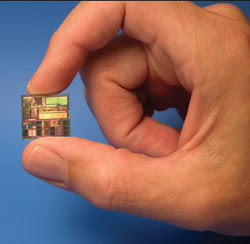It takes far more energy to make microchips than to make manhole covers per kilogram of product, according to a recent study by a group from MIT in Cambridge. It seems that, the smaller the widget, the more energy it takes throughout the manufacturing process.
The study, led by Timothy G. Gutowski, a professor at the institute, looked at a range of industrial manufacturing methods – from cast-iron foundries to semiconductor and nanomaterials fabricators.
Focusing on processes that use electricity as their prime source of energy, the results show that electricity use per unit of material processed has increased up to six orders of magnitude over the past few decades. The reason is the development of new manufacturing processes that are thought to be more sophisticated technology.
 The older processes include machining, injection molding and metal melting for casting. Newer processes that use the most electricity per unit of mass include thermal oxidative processes and electrical discharge machining. Falling into the midrange of electricity use are processes used in semiconductor manufacturing, such as sputtering and dry etching, and various chemical vapor deposition methods.
The older processes include machining, injection molding and metal melting for casting. Newer processes that use the most electricity per unit of mass include thermal oxidative processes and electrical discharge machining. Falling into the midrange of electricity use are processes used in semiconductor manufacturing, such as sputtering and dry etching, and various chemical vapor deposition methods.
The group’s report, “Thermodynamic Analysis of Resources Used in Manufacturing Processes,” published in Environmental Science and Technology, notes that electricity is measured by unit, indicating that individual processes can show different results, depending on changes in the amount processed.
The team developed a thermodynamic framework for the study that can be used to make manufacturing processes more energy efficient.
Gutowski noted that manufacturers are concerned with making products cheaper, better or faster, but may not be aware of how “green” their processes are in terms of energy used. Simple “fixes” to cut electricity use include eliminating idle time, operating at higher rates, improving yields and finding alternatives to vapor phase processes.
Although industry has shown interest in greening the manufacturing process, he said, incentives such as higher fuel costs and government actions are needed.